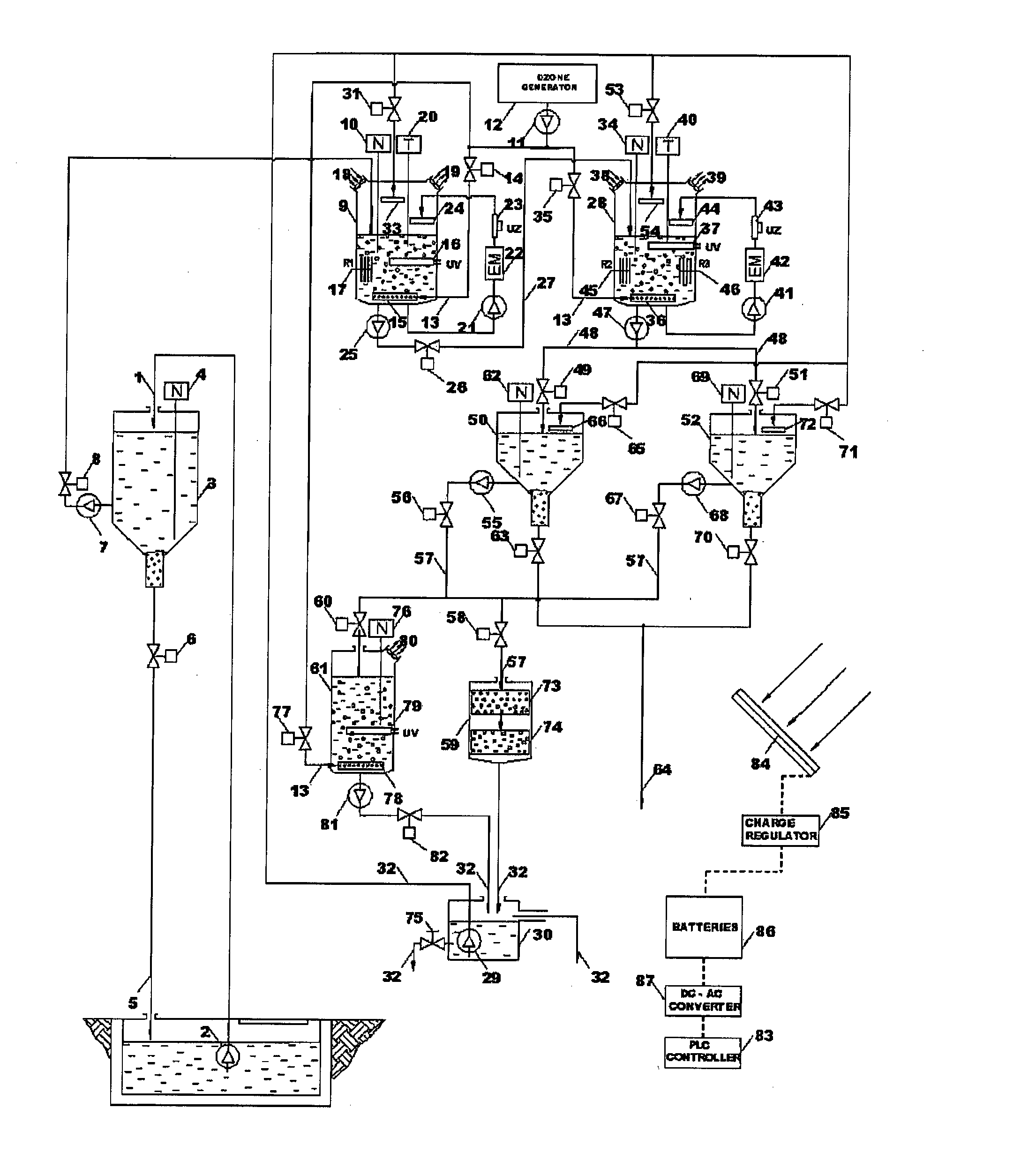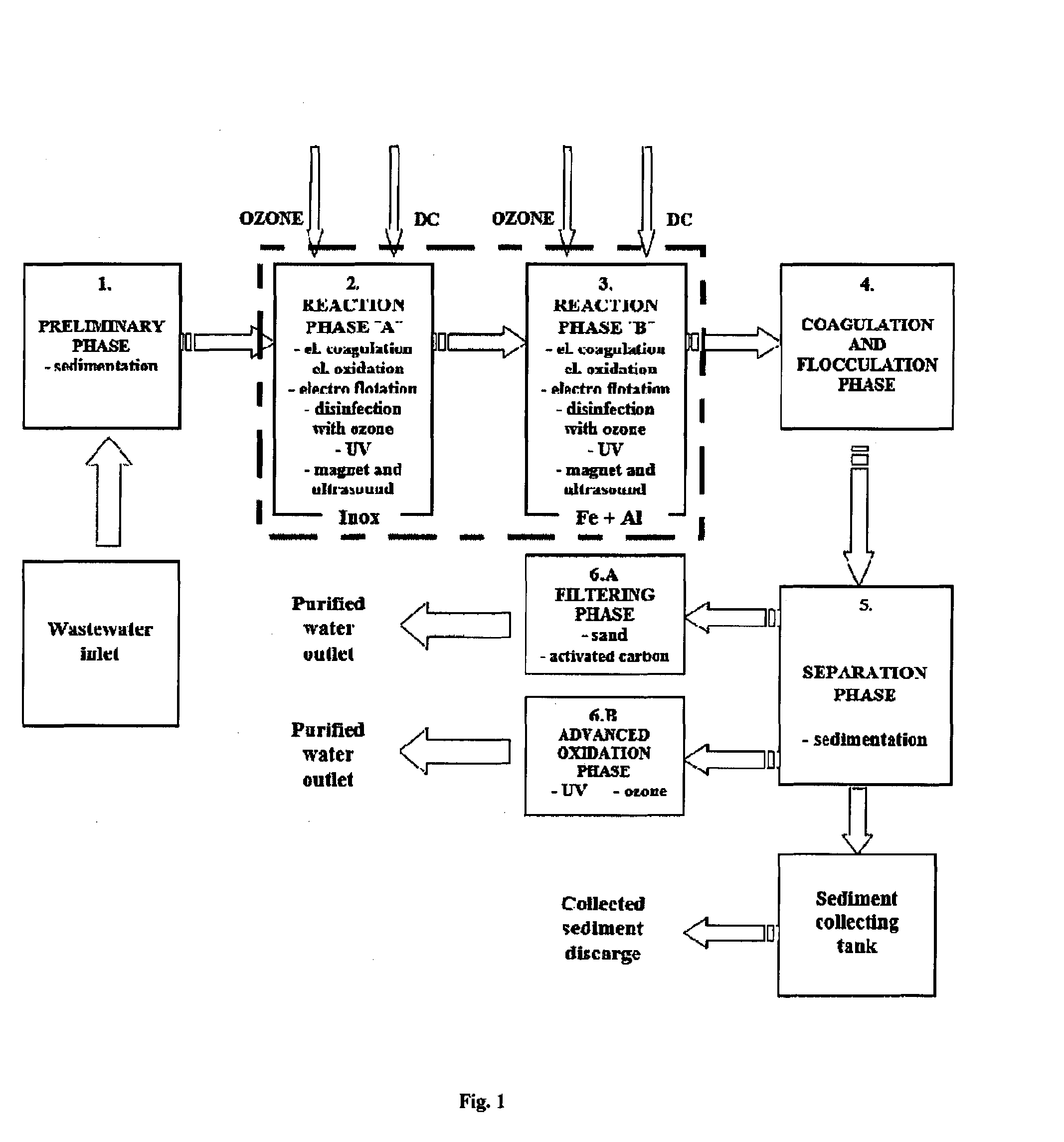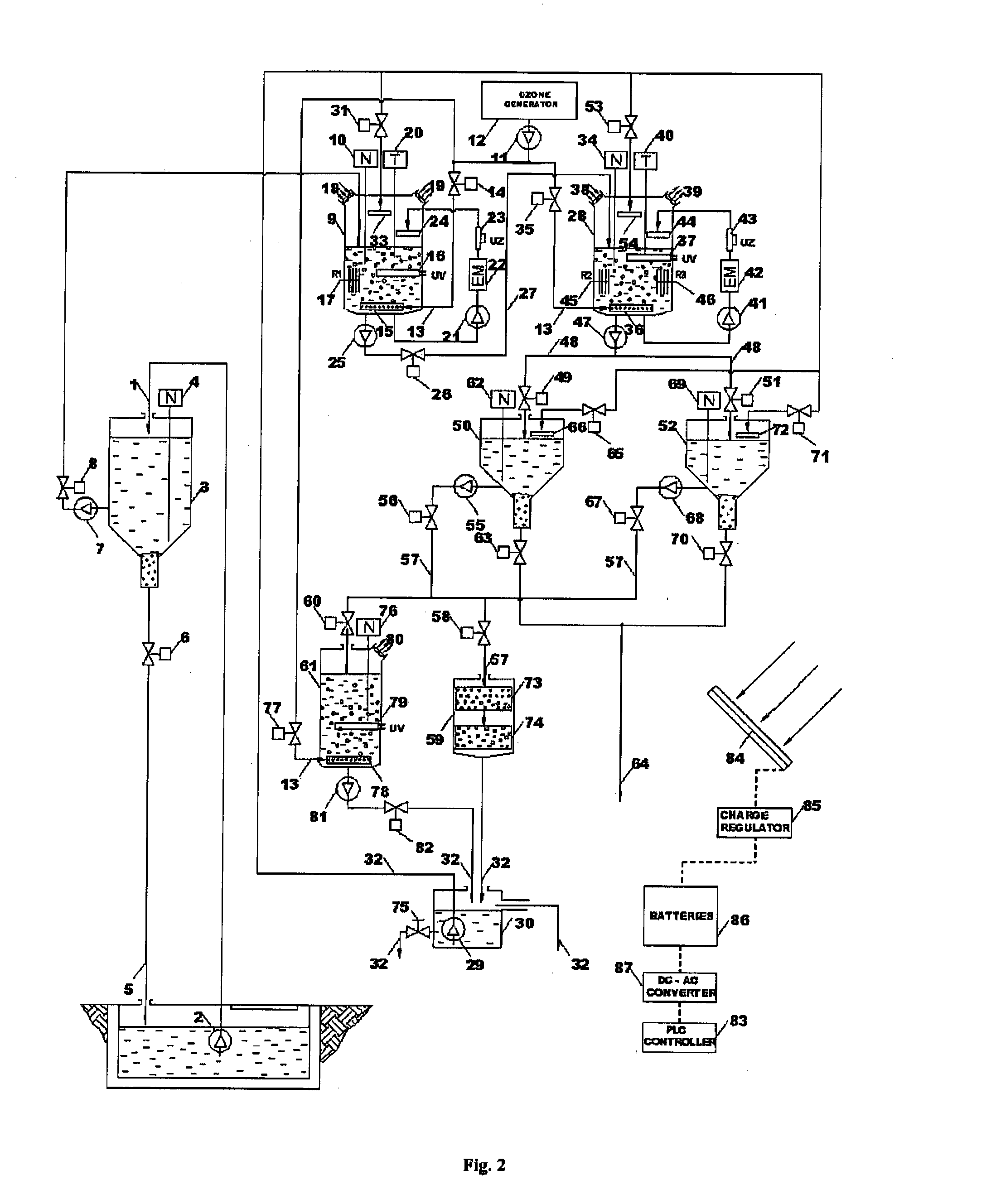Process and device for electrochemical treatment of industrial wastewater and drinking water
a technology of industrial wastewater and electrochemical treatment, applied in the direction of electrolysis components, water contaminants, energy-based wastewater treatment, etc., can solve the problem of reducing the efficacy of element removal from waste water, and achieve the effect of reducing the level of generated foam
- Summary
- Abstract
- Description
- Claims
- Application Information
AI Technical Summary
Benefits of technology
Problems solved by technology
Method used
Image
Examples
example 1
Treatment of Wastewater Generated after Pressure Washing of Boats
[0158]The device for electrochemical treatment of industrial wastewater is used in treatment of wastewater generated after pressure washing of boats coated with antifouling agents. Pressure pump 2 pumps the collected waste water 1 into the water preparation tank of total volume of 3000 L, where in the first phase of treatment it is left still for the duration of Tm=60 min. Coarser particles of contamination, sand and undissolved paint cracks are separated on the bottom of water preparation tank.
[0159]After sedimentation, water pump 7 transfers the water from the water preparation tank 3 into the reactor vessel 9 of 220 l volume, where ozonation and mixing of water with ozone begins in the duration of T1=30 min. Ozone 13 from ozone generator 12 is pumped in at flow rate Q=5 l / min on the bottom of reactor vessel, in which way the oxidation of organic matter takes place, at the same time as mixing in the reactor vessel 9....
example 2
Treatment of Wastewater Generated in Galvanization Process
[0169]Electrochemical treatment device for industrial wastewater is used in treatment of wastewater generated in galvanization process.
[0170]From the neutralization reservoir, waste water 1 is pumped with pressure pump 2 into 220 l volume reactor vessel 28. Water level in the reaction vessel 28 is maintained in designed limits by level-regulator 34, and when the water in the reactor vessel 28 reaches the designed level, set of reactor electrode set R2 is turned on that is made of steel and has total surface of P1=0.6552 m2. Its operation in duration of T1=15 min at U1=12 V and I1=45 A set of reactor electrode R2 creates electrochemical corrosion of the anode, where Fe2+ ions are released in the water and perform chromium (VI) reduction into chromium (III) with parallel oxidation of Fe2+ into Fe3+. In reaction with OH− ions generated in water reduction on the cathode Fe(OH)3 and Cr(OH)3 are generated as per the following react...
example 3
Preparation of Drinking Water
[0182]Groundwater from the bored well loaded with heavy metals, arsenic, organic matter and ammonia was treated with electrochemical treatment plant.
[0183]Raw water 1 from the reception tank is pumped with pressure pump 2 into the 220 l volume reactor vessel 28. Water level in the reactor vessel 28 is maintained within designed levels by level-regulator 34, and when water reach the wished value in reactor vessel 28 set of reactor electrode set R2 that is made of steel and has total surface of P1=0.6552 m2 is turned on. The operation of reactor electrode set R2 during T1=15 min at U1=12 V and I1=50 A leads to electrochemical corrosion of the anode where simultaneously Fe2+ ions are released into the water that perform reduction of chromium (VI) into chromium (III) and in parallel the oxidation of Fe2+ to Fe3+.
[0184]Generated Fe(OH)3 leads to destabilization of the colloid which created conditions for coagulation / flocculation of heavy metals and other susp...
PUM
| Property | Measurement | Unit |
|---|---|---|
| concentration | aaaaa | aaaaa |
| concentration | aaaaa | aaaaa |
| concentration | aaaaa | aaaaa |
Abstract
Description
Claims
Application Information
 Login to View More
Login to View More - R&D
- Intellectual Property
- Life Sciences
- Materials
- Tech Scout
- Unparalleled Data Quality
- Higher Quality Content
- 60% Fewer Hallucinations
Browse by: Latest US Patents, China's latest patents, Technical Efficacy Thesaurus, Application Domain, Technology Topic, Popular Technical Reports.
© 2025 PatSnap. All rights reserved.Legal|Privacy policy|Modern Slavery Act Transparency Statement|Sitemap|About US| Contact US: help@patsnap.com



